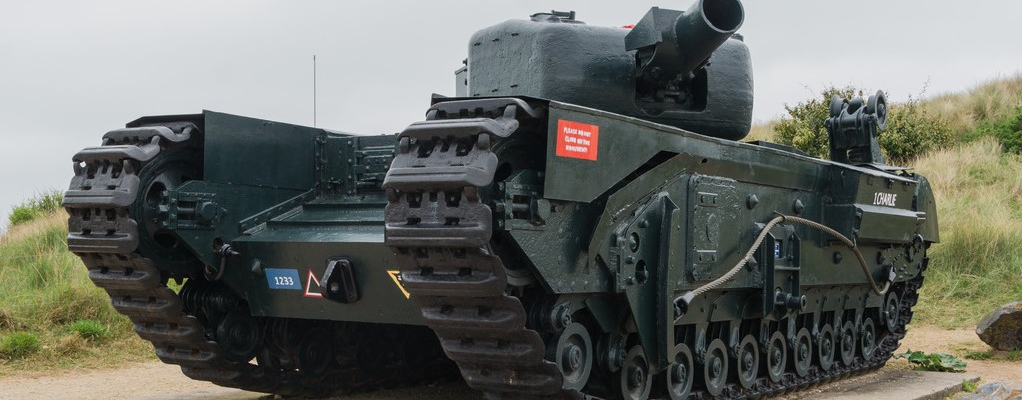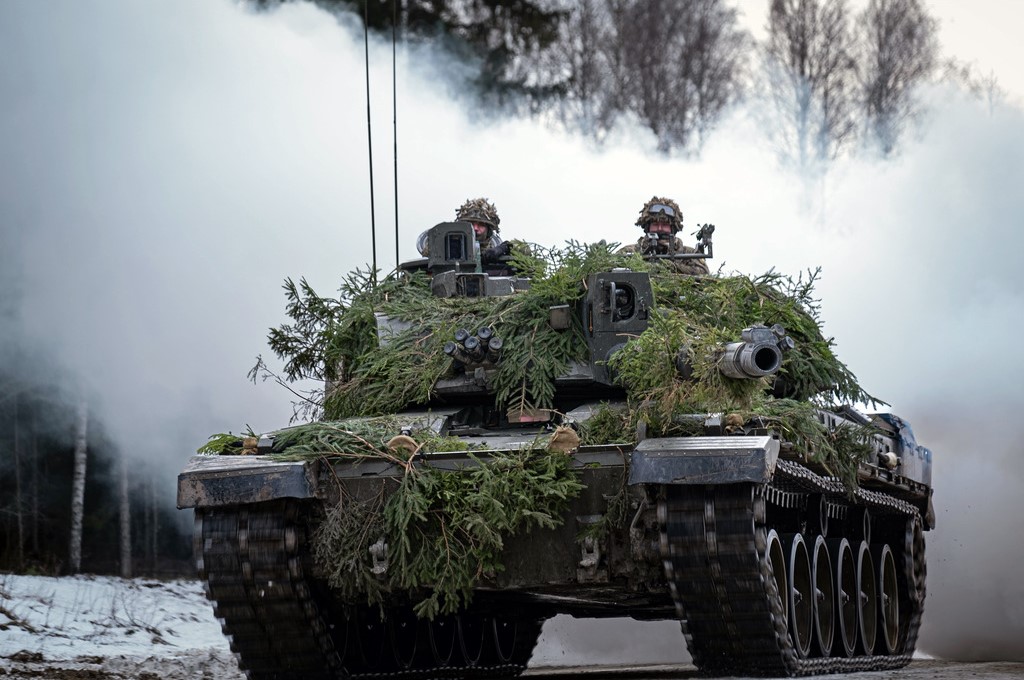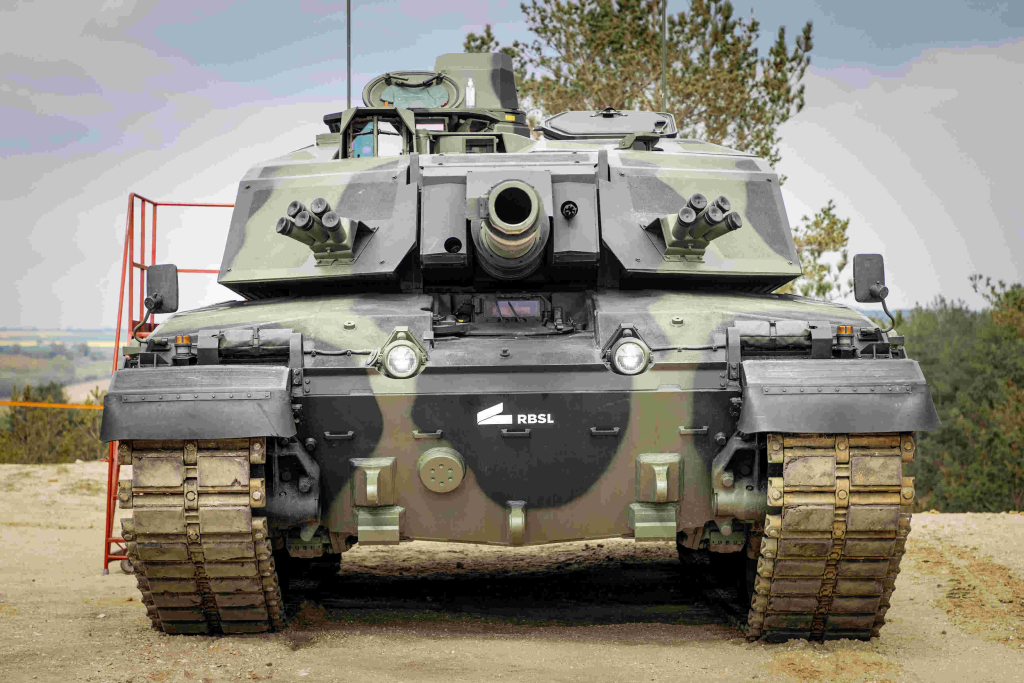Significant British Tanks Throughout History

British tanks have left a lasting mark on military history. Their pioneering role began with the Mark I tank in World War I, which broke trench warfare standoffs. In subsequent World War II and the Gulf War conflicts, tanks like the Churchill and Challenger series showcased innovation and effectiveness. Today, the Challenger 2 represents the UK’s dedication to armoured warfare, emphasising the importance of tanks in global military strategy.
In this article, we are not discussing the best, or what the most significant British tank in history is because that can be subjective. Instead, we are taking a brief look at a few tanks that helped shape the UK military throughout the years.
Mark I Tank: World War I

The development of the Mark 1 tank began in 1915, building off the foundation of the first prototype tank, the “Little Willie” Development was fast, and on the 15th of September 1916, the first Mark I tank was deployed in combat. Even though the British Mark I tank was the first combat tank, it had some pretty cool features, including:
- The tank’s rhomboid shape allowed it to cross trenches and navigate difficult obstacles
- The tank had caterpillar tracks that gave it the traction it needed to navigate through difficult terrain, like muddy, uneven ground and trenches
- Mark I male tanks were armed with a Hotchkiss Six-pounder in each Sponson. They were also equipped with three light machine guns.
- Mark I female tanks used the Vickers heavy machine gun instead of the Hotchkiss
The tank did have a few issues; Crew conditions inside the tank were uncomfortable, with poor ventilation and communication between compartments. The Mark I was relatively slow and had mechanical reliability issues, leading to breakdowns during battle. Remember, Quorum’s Supportability Consultants were not around in 1915 to provide support.
The Mark I tank made its combat debut at the Battle of Flers-Courcelette during World War I. It demonstrated its ability to break through enemy lines and provide cover for infantry, which is what it was originally designed to do.
Its design and deployment influenced the development of tanks throughout the 20th century, both in the United Kingdom and other countries.
Vickers Medium Tank: Interwar Period
Between World War I and World War II, new ideologies and technological advancements greatly impacted the significant challenges and conflicts that defined the 20th century.
The Vickers Medium tank solved many issues that the Mark I tank had and was a significant step forward in tank design. It incorporated innovations in suspension, armour, crew comfort, and mobility. The improved mobility is largely thanks to the 90-horsepower Armstrong Siddeley V-8 engine.
Even though the British Army did not deploy the tank much, it did see action in various conflicts, like the Spanish Civil War. That said, the Vickers Medium British tank played a significant role in shaping the development of subsequent medium and cruiser tanks during World War II.
Churchill Tank: World War II

The British Churchill tank Mark I was designed in 1940, and by 1941, it was out of its prototype phase and ready for deployment.
The tank was known for its impressive front armour, which offered strong protection against enemy fire. Its reputation for mechanical reliability was well-deserved, especially in challenging environments like the Western Desert and the muddy battlefields of Western Europe.
Additionally, it demonstrated versatility by serving in various roles, including infantry support, engineering tasks, and flamethrowing operations. The Churchill tank was primarily used in North Africa, the Mediterranean, and Western Europe.
One of the biggest drawbacks of the tank at the time was its size. Compared to other tanks, it was massive, making it an easy target.
The initial tank served as a foundation for over seven developed variations. Between 1940 and 1952, over 5,000 Churchill tanks were made, with the last of them being withdrawn from Korea in 1952.
Challenger 2: Modern Era

Moving onto the modern era, the Challenger 2 was introduced in 1998 and is known for its exceptional firepower and robust protection. With a 120mm rifled gun, advanced armour, and defensive systems, it remains a significant asset to the British Army, demonstrating its adaptability and effectiveness in modern armoured warfare.
One of the key strengths of the Challenger 2 is its use of second-generation Chobham armour to protect its hull and turret. Some tanks use a third-generation iterations of the armour. Chobham armour effectively counters HEAT warheads by disrupting their high-speed jets. The outer steel “burster” plate detonates the shell, safeguarding the composite array from the explosion and significantly improving the armour’s ability to withstand multiple hits.
The Challenger 2 is constantly undergoing modernisation, adapting to evolving conflicts and landscapes. It is a symbol of British military engineering and a testament to the importance of innovation, protection, and firepower in modern armoured warfare. With its remarkable capabilities and ongoing evolution, it remains a respected main battle tank on the international stage.
Challenger 2 Variants
While the Challenger 2 has been upgraded and modified a few times, there are five main variants of the tank, all designed to perform specific task. For example:
- CRARRV: The Challenger Armoured Repair and Recovery Vehicle is one of the most important variants as it can recover and repair Challenger tanks damaged or stranded in operations. However, the tank was initially based on the Challenger 1, but has been modified and adapted according to the Challenger 2.
- AEV: The Trojan Armoured Engineer Vehicle was first brought into service in 2007. Based on the Challenger 2 and built by BAE Systems Land Systems, the tank can breach minefields while acting as a transport and construction tank.
British Tanks Going Forward

The Challenger 2 has served the British Army for some time now, but it will soon be replaced by the Challenger 3, which is already in development. In fact, the first prototypes are expected to go through their trials at the end of 2023.
The Ministry of Defence plans to have 148 tanks ready and in service by 2030, with an initial rollout phase happening by 2027.
The Challenger 3 has already undergone its Critical Design Review (CDR) which, was a success.
Weighing 66 tonnes, the tank is designed for a crew of four. The Challenger 3 boasts a completely redesigned turret and an enhanced hull. However, the most substantial transformation from the Challenger 2 to the Challenger 3 is the replacement of its primary armament.
The previous 120 mm L30A1 rifled main gun is being replaced with the advanced 120 mm L55A1 smoothbore gun, an upgraded iteration of the L55 featured in the Leopard 2A6/A7 main battle tank family. This upgrade enhances compatibility with other NATO member nations’ tanks.
The development of ammunition is being undertaken in collaboration with Rheinmetall AG, with a particular focus on crafting a new kinetic energy round tailored for the Challenger 3 and the Leopard 2.
Have Any Questions about your Supportability Needs? With us a problem shared is the start of a problem solved.
+44 (0) 1952 671950
info@qlsl.com
Don’t miss the next installment…
Register for support engineering insights and Quorum news, direct to your mailbox.



